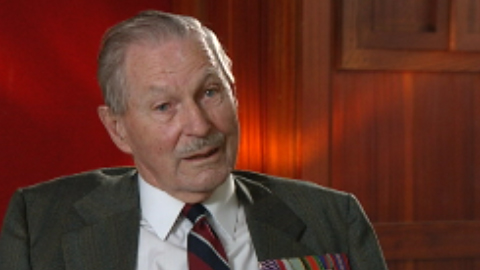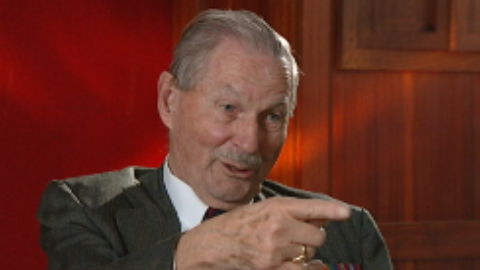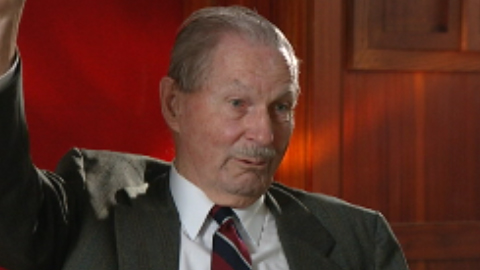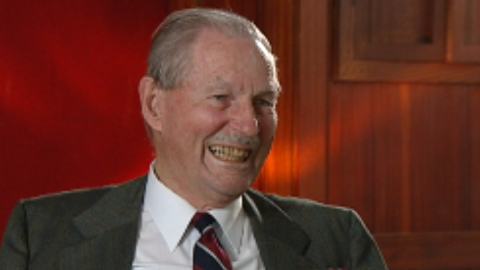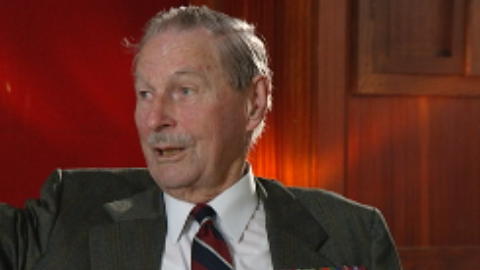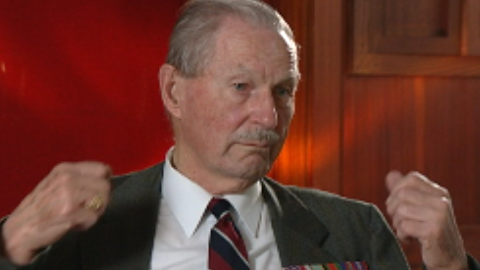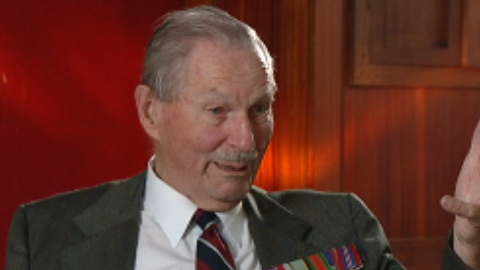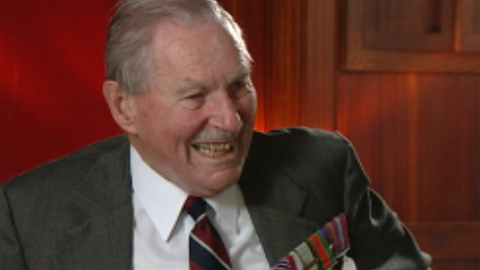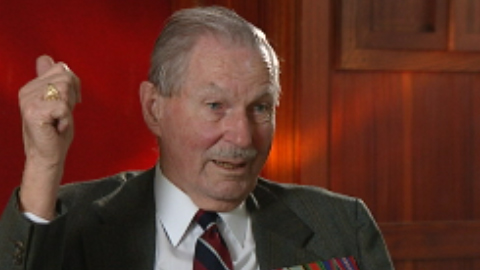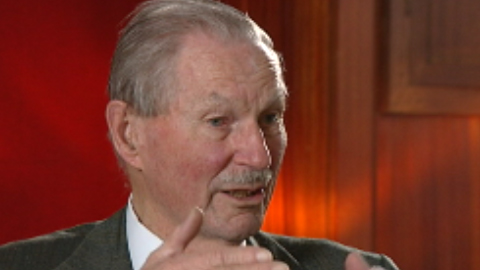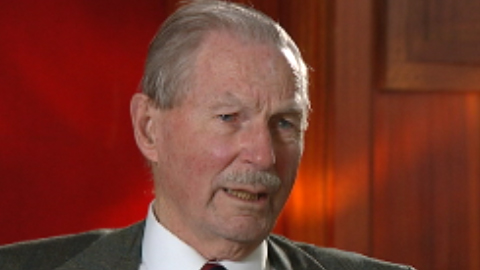A Berlin bombing run
Heroes Remember
A Berlin bombing run
Transcript
Description
Mr. Bower-Binns gives a detailed description of flying to Berlin, accurately delivering a bomb load, having an engine disabled by flak, and managing to limp home.
John Bower-Binns
John Bower-Binns was born in Ottawa, Ontario. One of two children, he was born on March 7, 1921. He had two uncles in the Royal Air Force, inspiring him to build model aeroplanes. There being a six month waiting list for naval enlistment, Mr. Bower-Binns opted for the Air Force. After being screened out of the pilot queue, he became a navigator. After crewing up in England, he flew many bombing missions, including one to Berlin. Mr. Bower-Binns was fortunate to fly with the same crew during his entire tour of duty. A recipient of the Distinguished Flying Cross, he achieved the rank of Flight-Lieutenant during his Second World War service.
Meta Data
- Medium:
- Video
- Owner:
- Veterans Affairs Canada
- Duration:
- 2:44
- Person Interviewed:
- John Bower-Binns
- War, Conflict or Mission:
- Second World War
- Location/Theatre:
- Germany
- Branch:
- Air Force
- Units/Ship:
- #1 Bomber Command
- Rank:
- Flight Lieutenant
- Occupation:
- Navigator
Related Videos
- Date modified:



